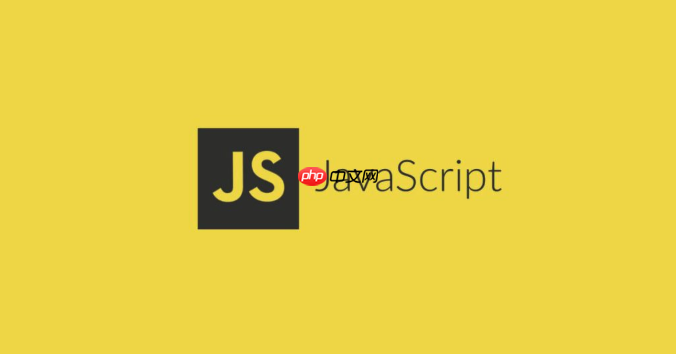node.js实现http缓存的核心在于控制http响应头。1.cache-control是最常用的缓存控制方式,支持public、private、no-cache、no-store和max-age等参数配置;2.expires指定资源过期时间,但优先级低于cache-control;3.etag和last-modified用于条件请求,通过if-none-match或if-modified-since验证资源是否更新;4.实际应用中常结合cache-control与etag/last-modified策略,前者定义基础缓存规则,后者提供更精确的验证机制;5.使用node.js中间件如etag和fresh可简化缓存管理,自动处理etag生成与条件请求;6.避免缓存失效或过度缓存可通过版本控制(如文件名加版本号)、合理配置cdn缓存策略及利用浏览器开发者工具进行调试实现。

Node.js实现HTTP缓存,简单来说,就是让你的服务器记住之前请求过的资源,下次再有人来要,直接从服务器本地“回忆”起来,不用再费劲去真正获取。这能大大提升网站速度,减轻服务器压力。

解决方案

Node.js中实现HTTP缓存,核心在于控制HTTP响应头。主要涉及以下几个关键点:
Cache-Control 响应头: 这是最常用的缓存控制方式。它告诉浏览器和中间缓存服务器(如CDN)如何缓存资源。

public: 允许任何缓存(包括浏览器和CDN)缓存资源。private: 只允许浏览器缓存,CDN不能缓存。no-cache: 每次使用缓存前都必须向服务器验证资源是否过期。no-store: 禁止任何缓存。max-age=seconds: 资源在缓存中可以存在的最长时间,单位是秒。例如:
const http = require('http');
const server = http.createServer((req, res) => {
res.writeHead(200, {
'Content-Type': 'text/plain',
'Cache-Control': 'public, max-age=3600' // 缓存1小时
});
res.end('Hello, world!');
});
server.listen(3000, () => {
console.log('Server listening on port 3000');
});Expires 响应头: 指定资源的过期时间,格式是HTTP日期。 Cache-Control 的优先级更高,如果两者同时存在,浏览器会忽略 Expires。
const http = require('http');
const server = http.createServer((req, res) => {
const now = new Date();
const expires = new Date(now.getTime() + 3600000); // 1小时后过期
res.writeHead(200, {
'Content-Type': 'text/plain',
'Expires': expires.toUTCString()
});
res.end('Hello, world!');
});
server.listen(3000, () => {
console.log('Server listening on port 3000');
});ETag 和 Last-Modified 响应头: 它们用于条件请求。 ETag 是一个资源的唯一标识符,而 Last-Modified 是资源的最后修改时间。当浏览器再次请求资源时,会发送 If-None-Match (包含之前的 ETag)或 If-Modified-Since (包含之前的 Last-Modified)请求头。服务器比较这些值,如果资源没有变化,则返回 304 Not Modified 状态码,告诉浏览器使用缓存。
const http = require('http');
const crypto = require('crypto');
const fs = require('fs');
const server = http.createServer((req, res) => {
if (req.url === '/image.jpg') {
fs.readFile('image.jpg', (err, data) => {
if (err) {
res.writeHead(500);
res.end('Error loading image');
return;
}
const etag = crypto.createHash('md5').update(data).digest('hex');
const lastModified = new Date(fs.statSync('image.jpg').mtime).toUTCString();
if (req.headers['if-none-match'] === etag || req.headers['if-modified-since'] === lastModified) {
res.writeHead(304, 'Not Modified');
res.end();
return;
}
res.writeHead(200, {
'Content-Type': 'image/jpeg',
'ETag': etag,
'Last-Modified': lastModified,
'Cache-Control': 'public, max-age=3600'
});
res.end(data);
});
} else {
res.writeHead(200, { 'Content-Type': 'text/plain' });
res.end('Hello, world!');
}
});
server.listen(3000, () => {
console.log('Server listening on port 3000');
});Node.js缓存策略的选择:Cache-Control vs ETag/Last-Modified,哪个更适合?
选择哪种缓存策略取决于你的具体需求。Cache-Control 更简单直接,适用于静态资源。而 ETag 和 Last-Modified 提供了更精细的控制,允许服务器验证资源是否真的发生了变化,更适合动态内容或需要更严格缓存控制的场景。实际上,很多时候你会同时使用这两种策略,Cache-Control 定义基本的缓存策略,ETag 或 Last-Modified 用于条件请求,进行更精确的验证。
如何利用Node.js中间件简化HTTP缓存管理?
手动设置这些响应头可能会比较繁琐,尤其是当你的应用有大量需要缓存的资源时。这时候,可以考虑使用Node.js中间件来简化这个过程。例如,etag 中间件可以自动生成 ETag 响应头,fresh 中间件可以帮助你处理条件请求。
const express = require('express');
const etag = require('etag');
const fresh = require('fresh');
const fs = require('fs');
const app = express();
app.get('/image.jpg', (req, res) => {
fs.readFile('image.jpg', (err, data) => {
if (err) {
res.writeHead(500);
res.end('Error loading image');
return;
}
const etagValue = etag(data);
res.setHeader('ETag', etagValue);
res.setHeader('Cache-Control', 'public, max-age=3600');
if (fresh(req.headers, { etag: etagValue })) {
res.statusCode = 304;
res.end();
return;
}
res.writeHead(200, { 'Content-Type': 'image/jpeg' });
res.end(data);
});
});
app.listen(3000, () => {
console.log('Server listening on port 3000');
});Node.js缓存的常见问题与调试技巧:如何避免缓存失效或过度缓存?
缓存失效或过度缓存是HTTP缓存中常见的坑。缓存失效会导致用户总是获取旧版本资源,而过度缓存则可能导致服务器压力过大,缓存利用率不高。
style.v1.css。当更新资源时,只需要修改版本号即可。总而言之,Node.js实现HTTP缓存并不复杂,关键在于理解HTTP缓存机制,并根据你的应用场景选择合适的缓存策略。合理利用缓存,可以显著提升你的网站性能,改善用户体验。
以上就是Node.js如何实现HTTP缓存?的详细内容,更多请关注php中文网其它相关文章!

每个人都需要一台速度更快、更稳定的 PC。随着时间的推移,垃圾文件、旧注册表数据和不必要的后台进程会占用资源并降低性能。幸运的是,许多工具可以让 Windows 保持平稳运行。

Copyright 2014-2025 https://www.php.cn/ All Rights Reserved | php.cn | 湘ICP备2023035733号